
|
|
|
Retro Future - Celebrating 25 years of Future Publishing
|
Future Publishing founder, Chris Anderson, admits that his early career in the magazine publishing industry happened by chance. “Personal Computer Games was the first magazine I worked on. I had been bitten hard by the computer bug, and kind of bluffed my way into the Editor’s chair. I really had no clue how magazines were put together, but unlike some of the other journalists in the field at the time, at least I was passionate about the content.” After a year of commuting from Somerton to London, Chris decided to leave. After all, he had heard of a new magazine being launched by Newsfield Publications. “I started talking with them about being Editor. Crash had been a big hit, and I thought it would be a lot more fun to work on a single-format magazine. They liked some of the crazy ideas I was throwing out, and so we struck a deal whereby the editorial office of Zzap! would be launched near Somerton. (The last thing I wanted was another long commute to Ludlow). Soon after I announced I was leaving, VNU closed PCG... which meant the delightful Bob Wade could come join too. We found a funny little office in Yeovil and
then hired a small team and dreamt up the launch of Zzap!, which was greeted with huge enthusiasm.”
|
|
However, things in the publishing world rarely stay still for long as Chris explains. “Events took a very unexpected turn when, just three months later [following the launch of Zzap!64], the company decided it would move the office to Ludlow. I protested at the betrayal, and happily... they fired me!” Chris used this opportunity to go it alone and launch a new magazine with a brand new publishing company that he would run himself. “Following hot on the heels of the success of the Commodore 64 was a little computer called the Amstrad CPC464, and |
|
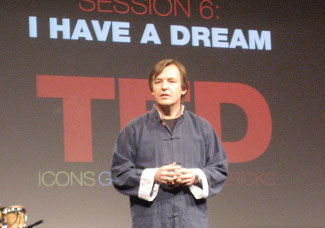 |
|
Chris Anderson at a TED
conference in 2007 |
it was crying out for a decent magazine. Loyal Bob Wade chose to join me, and within three months of being fired, we’d funded a new company [Future Publishing], set up a poky little office behind a petrol station in Somerton, signed a national distribution agreement, hired a tiny team (including the incredible designer Trevor Gilham, right out of art college).”
Just as things were starting to look good, two major headaches presented themselves to the new Publishing outfit. “There was one particularly bad day,” recalls Chris. “We’d been pressing for Amstrad’s support for the launch, and for permission to use the name Amstrad Action (which had already been publicised to the newstrade). Finally we received the letter from Amstrad. It essentially said No. ‘You must not pass of as Amstrad. You may call it ‘Action on the Amstrad CPC Computer’. We felt this might not lead to instant success on the newsstand. The same day we were told that Newsfield were launching a direct competitor. Bob, glancing up from level 33 of some game he was reviewing, dolefully commented ‘this isn’t going to happen, is it?’ Happily, after a long and loud phone call, Amstrad changed their minds on the title provided we added the ‘not an official Amstrad publication’ tagline. Seeing as the official publication was pretty rubbish, we thought this was just fine.”
|
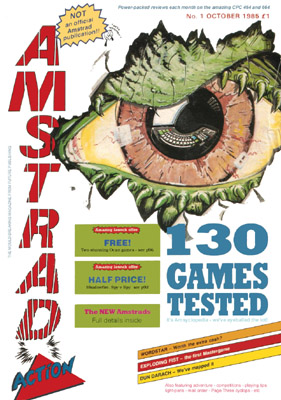 |
|
“I just raised enough money to print the first two issues. I figured that if the magazine didn’t sell, we’d know before issue three had to be printed and could close the business in time to save my house! Those early issues were typeset from copy typed into an Amstrad CPC. No onscreen layout at the time. We typeset by connecting to a 300-baud modem to a non-union typesetter in London, who then mailed us back big rolls of typeset print, which were painstakingly sliced into columns and pasted up. There was no onscreen checks of what you were setting. A single missed close-bracket could result in a huge roll of body text set in giant 72 pt type... and corresponding bill. Screen pics were screened and sized in a dark-room using a huge second-hand process camera. We had no idea how to do this... as a quick glance at the first issue will reveal. In fact, I was at the Personal Computer |
World show where AA was launched and overhead Tim Chaney, the boss of leading software house US Gold, telling someone the magazine had no chance of survival. That certainly got my attention.”
With the the pioneering of the covermount, Chris secured the future of the company. “Ocean donated a couple of games to us...” Chris explains. “It probably saved AA’s — and Future’s — life. Because unbeknownst to us, despite a lot of enthusiasm from some readers, the first two issues of AA sold pretty poorly... much worse than the numbers our distributor was initially estimating. Had we known the true situation, issue three would never have been published. As it was, we went ahead, cover tape and all... and saw the sales double. Phew!”
|
With sales figures of Amstrad Action vastly improving during 1986, Future Publishing were able to move into the top floor
of a refurbished building called The Old Barn and hire an extra three members of staff. With the company now settling in, it was now time to look at expanding the company’s portfolio. The Amstrad 8000 series of computers were selling very well and a surge in the PC marketplace appeared imminent. Thus, in the Autumn of 1986, Future launched 8000 Plus (later renamed PCW Plus) and PC Plus. |
|
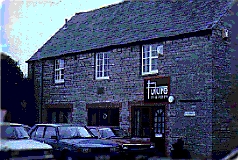 |
|
The Old Barn.
Future's home in 1986
|
Both titles were given an enthusiastic response from the public, a flood of subscriptions came in and Future was rising fast.
However, with three titles being published within the small confines of The Old Barn, space was tight. A move for the company was essential and Bath was voted as the favoured location. In May 1987, the editorial team of Future Publishing re-located to 4 Queen Street, Bath, while the admin team (accounts, subscription and mail order) remained at The Old Barn. Following the success of a covertape on issue three of Amstrad Action, Future recorded another milestone in June 1987 as PC Plus carried a coverdisk — the first magazine in Britain to do so. With a new generation of computers rising, a new multi-format magazine was launched to cater for them...
ACE(Advanced Computer Entertainment) was launched in October 1987 and with a slick clean design, the magazine was very much a template for publications to come. The magazine consisted mainly of former Amstrad Action and Personal Computer Games staff, including co-editors Peter Connor and Steve Cooke. Andy Wilton, former AA writer, was brought in as Reviews Editor, while Dave Packer and Andy Smith were hired as Staff Writers. Trevor Gilham, who helped launch AA, took on position of Art Editor. Coverage of systems in the magazine included the Atari ST, Amiga, PC, C64, ZX Spectrum and Amstrad CPC, but also included newer machines as time went on. The Screen Test, where the games were reviewed, was notable for giving games a final score out of 1000, rather than the usual percentage or mark out of ten.
|
To further cover the emerging 16-bit computers, ST Amiga Format was launched in June 1988 with co-editors Ben Taylor & Simon Williams. The magazine came with a mix of serious and gaming content for both the Commodore Amiga and Atari ST computers. ST Amiga Format included a unique cover disk which featured at dual format file system that could be read by both Amiga and ST machines. In November 1988, New Computer Express entered the fray with Chris Anderson onboard as Launch Editor himself. This was a weekly multi-format trade style magazine which offered the “first news, first reviews - every week”.
By Spring of 1989, ACE had become the industry’s favoured magazine, winning the ‘Magazine of the Year’ award. This hadn’t gone unnoticed by rival publisher EMAP, who subsequently put in an “unrefusable offer” for the magazine. The sale of ACE allowed Future to split ST Amiga Format into two separate titles: ST Format and Amiga Format. The former staff of ACE would essentially move straight onto Amiga Format with Bob Wade as editor. The decision to split the magazine proved to be a masterstroke as sales figures soared for both titles. |
S, subtitled ‘The Sega Magazine’, launched in October 1989 with Steve Jarratt at the helm as Editor. This was a very unique magazine for the time. Not only was it the first UK magazine to concentrate on console gaming (a year before Mean Machines launched), it was dedicated solely to the Master System (at least until the Mega Drive was released in Europe in 1990), and the first five issues were only available to subscribers.
|
In 1990, Future moved into the £2m Beauford Court
premises on Monmouth Street, Bath. With the purchase of Your Sinclair from Dennis Publishing in April 1990, Future now had a Sinclair magazine for the popular Spectrum machine. Editor Matt Bielby and his editorial staff therefore made the successful move from London to Bath. Later the same year (October 1990) Commodore Format was launched with Steve Jarratt taking the helm as Editor. By the end of 1990, Future Publishing had a magazine covering every major computer in the UK and was beginning to take |
|
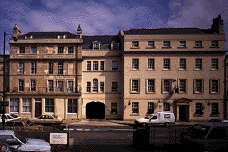 |
|
Future's Beauford Court premises at Monmouth
Street, Bath
|
|
its place as the most successful gaming magazine in the UK. In December 1990, S - The Sega Magazine — which was, by then, available in the newsstands — was renamed as Sega Power and was increasing in sales, thanks to the growing popularity of the Mega Drive. |
It was an extremely successful and busy time for Future Publishing at the turn of the decade and Steve Carey, who rose to the rank of Publisher, was at the helm of much of the activity. “Stuart Campbell and Frank O'Connor travelled down from Scotland on the same train, entirely unknown to each other, for job interviews at Fewtch,” recalls Steve. “In three weeks I recruited 21 people, including Andy Lowe, who was unemployed and home dog-minding in Stoke for his parents. I called him, got him to borrow train money so he could come for an interview the same day and before his parents got home he was back in Stoke with a job. An extraordinary crop of talent, and admittedly an extraordinarily voracious appetite for staff at Fewtch at the time.”
With the rising popularity of the Amiga as a gaming platform, Amiga Power was launched in May 1991. Matt Bielby, as Editor, brought a spiritual mentality of Your Sinclair to the new magazine and it proved to be another successful title for Future Publishing. Although mainly focused on the serious side of the PC, PC Format was also launched this year. However, there was some sad news: New Computer Express was faced with uphill battles for circulation and advertising revenue and it was decided to close the title.
|
Following the success of Sega Power, Future then launched a Nintendo specific magazine titled Total! with Steve Jarratt as Editor. The first issue, cover dated January 1992 featured content on the Nintendo consoles NES, Game Boy and, later on, the SNES. By June 1992, Future Publishing boasted some 21 magazines (with some non-gaming magazines, too), 300 members of staff and a £3m per month revenue. With the increasing popularity of the Mega Drive, MEGA was launched in October 1992 with former Deputy Editor of Sega Power, Neil West, as Editor. Just the following month, the SNES got a similar magazine with Super Play with Matt Bielby as Editor. Both magazines proved successful in their own field. November 1992 saw the first Future Entertainment Show held at Earls Court, London, which showcased forthcoming games from developers and publishers.
|
|
The popular Channel 4 videogaming show GamesMaster received an official gaming magazine companion as Future was awarded the licence. The January 1993 issue was launched with Jim Douglas as Editor and featured a design mimicking the aesthetics of the television show. The launch of GamesMaster magazine proved to be a massive success with 210,000 copies sold. With the unprecedented success of the 16-bit consoles (Mega Drive and SNES) Future acquired Sega Zone and Game Zone from Dennis Publishing. Edge was launched in October 1993 with Steve Jarratt (magazine launch editor king) helming. With a clean cut design, well written editorials and industry contacts, the multi-format magazine quickly became one of the most respected titles at the newsstands. Your Sinclair went out with their farewell issue number 93 in September 1993. The Spectrum gaming scene had been dwindling in the past year so the current staff, and former contributors, all popped in to reminisce about the magazine and to say goodbye to the great magazine. |
| In October 1993 Future bought GP Publications (later renamed Imagine Media), a US publishing company with 35 staff and 4 magazines (CD-ROM Today, Computer Entertainment News, Game Players and PC Entertainment). “Having seen Future grow in eight years to more than 30 |
magazines and 400 people, I was excited at the idea of trying to do the same in America,” explained Chris, “much tougher market, of course. Distribution much harder. But it was after all, the home of much of what we were writing about. In many ways that story was even more of a challenge than the early days of Future.” With the increasing success of the PC gaming scene, PC Gamer launched in December 1993 with Matt Bielby as Editor. This was very much a gaming magazine to compliment PC Format’s more serious content.
In the Spring of 1994, Sega Zone was sold
off to publisher Maverick Magazines, an “offer we couldn’t refuse” stated the press release. June 1994 also saw sister title
Game Zone close. “To concentrate on our
two other Nintendo titles”, claimed Future. MEGA also felt the brunt of the magazine culling as it was also sold onto Maverick Magazines with “another offer we couldn't refuse”. Staff of the closed/sold magazines were slotted in elsewhere around the
|
|
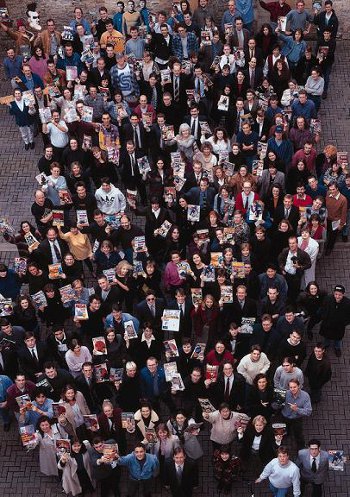 |
|
The staff of Future Publishing in 1993.
Click image to follow on to a full
sized and tagged Flickr image
|
| company’s portfolio of magazines. October 1994 saw Future being bought by Pearson New Entertainment Europe, a division of Pearson plc., and Nick Alexander became company chairman. Ultimate Future Games was launched with its December 1994 issue. The multi-format magazine was very similar in content to Future’s own GamesMaster magazine and it didn’t last too long. |
May 1995 saw the launch of short lived PC gaming magazine PC Attack with Jon Smith as Editor. The magazine was subsequently licenced out to Maverick Magazines in November 1995. Future celebrated its tenth birthday in June 1995 and it was also the month when the final issue of Amstrad Action was published. The magazine that started the company off had come to an end, 117 issues later. Commodore Format also felt the pinch of the diminishing 8-bit computer scene and closed with a special farewell issue in October 1995. However, the following month, The Official Playstation Magazine would be launched and go down as one of the most succesful launches in UK gaming magazine history. This was the officially Sony approved magazine and the first issue, November 1995, featured the first of its regular cover mounted CDs. Astonishing sales figures followed.
With the success of the Official Sony Playstation Magazine, Playstation Power was launched. This new monthly magazine offered in-depth info and complete games guides around. Amiga Power went out with a bang as its final “Goodbye issue” hit the shelves. The September 1996 issue featured concept reviews and articles as The Four Cyclists of the Apocalypse closed in on the staff and contributors. The writer of each article was killed off gruesomely leaving Editor Steve Faragher and Art Editor Sue Huntley with a futile shootout on the back page. Another final issue as Total! bowed out with issue 58 in October 1996. |
N64 Magazine, which was very much the spiritual continuation Super Play, was launched in April 1997. The magazine focused on Nintendo’s N64 gaming console. With Mega Drive and Master System coverage diminishing in the pages of Sega Power, it was decided to re-launch the magazine after issue 91 as Saturn Power. The re-launched Saturn Power issue 1 focused on Sega’s underrated Saturn gaming console.
May 1998 saw Pearson complete the sale of Future Publishing to a company buyout backed by venture capitalists Apax Partners. Following the deal, MD Greg Ingham was appointed Chief Executive, and the company's original founder, Chris Anderson, became non-executive Chairman. Following the unfortunate fortunes of Sega’s Saturn, Saturn Power magazine came to an end with just ten issues in April 1998. |
|
Arcade, a respected games feature magazine, was launched in January 1999 with Matt Bielby as Editor. DC-UK was then launched in September 1999. The magazine, which covered the Sega Dreamcast, lasted about as long as the badly under supported games console, with 20 issues. |
WithEdge,PC Gamerand GamesMaster still going strong today and the company holding the official magazine licences for all three major gaming consoles, Future Publishing has proven to be the most successful gaming magazine publishers in the UK and its titles and legacy have been felt around the world.
So what was it like working for Future Publishing during these years? “In
magazine publishing, the best fun you can have is to launch a magazine.” explains |
|
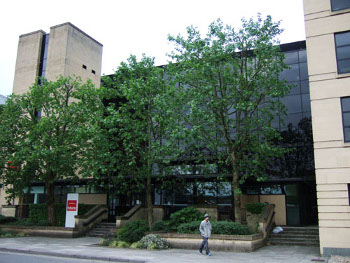 |
|
Current Future Publishing offices in Bath
|
|
Steve Carey. “Most people in publishing don't get to experience it even once. As someone lucky enough to be at Future at that time, I got the chance to do it heaps of times. Future was an amazing place at the time. We had the best journos in the business — Jarratt in particular — and in Chris Anderson a driven, incredibly smart entrepreneur with a brain the size of a planet. There was so much optimism and success around the place. I'm not sure that people fully appreciated it — I certainly did, and look back on those years with great fondness.” |
|
|
|
All the intellectual property rights related to the works presented on this site belong to their respective owners.
This site is strictly created for the purpose of preservation and education.
Follow us on Mastodon to get the latest updates as they go live as well as daily magazine articles:
 |
|
|